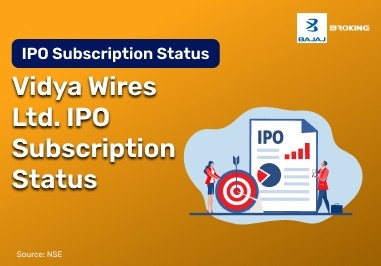The arrival of the monsoon season in India carries significance for various sectors of the economy. The India Meteorological Department (IMD) plays a role in providing forecasts for the southwest monsoon, typically from June to September. These forecasts offer an early indication of rainfall patterns, which can influence agricultural output, rural incomes, and consumer demand. Understanding the IMD's predictions for 2025 can help in observing potential movements in certain segments of the stock market.
The IMD's updated long-range forecast for the 2025 Southwest Monsoon season indicates a likelihood of above-normal rainfall across the country as a whole, specifically 106% of the Long Period Average (LPA) with a model error of $\pm$4%. Regionally, central India and the South Peninsular region are expected to receive above-normal rainfall, while Northwest India is likely to experience normal rainfall. Northeast India might see below-normal rainfall. This outlook for the Monsoon Core Zone (MCZ), which encompasses a significant portion of India's rain-fed agricultural land, points towards conditions for the Kharif cropping season.
The monsoon's influence extends beyond agriculture, affecting a range of industries that rely on rural consumption and overall economic sentiment. Companies whose fortunes are intertwined with agricultural prosperity or rural demand often garner attention during this period. The following sections explore how different sectors might react to the projected monsoon patterns in 2025.
Agriculture and Agrochemical Stocks to Track This Monsoon
The agriculture sector remains a foundational component of the Indian economy. Monsoon rains are crucial for crop cultivation, especially for Kharif crops like rice, pulses, cotton, and soybeans. A favourable monsoon can lead to higher agricultural output, which in turn supports rural incomes. This increased income can translate into higher demand for agricultural inputs such as fertilisers, pesticides, and seeds.
Companies operating in the agrochemical and fertiliser segments often see their performance linked to the monsoon's progression. When rainfall is adequate and distributed well, farmers may invest more in these inputs to maximise their yields. Conversely, a deficient or erratic monsoon can lead to reduced demand and lower sales for these companies.
Here are some sub-sectors and example companies that operate within this space:
Company Name
| Sub-Sector
|
Coromandel International Ltd.
| Fertilisers & Agro Chemicals
|
UPL Ltd.
| Fertilisers & Agro Chemicals
|
Kaveri Seed Company Ltd.
| Seeds
|
Rallis India Ltd.
| Fertilisers & Agro Chemicals
|
Godrej Agrovet Ltd.
| Diversified Agri-business
|
Bayer CropScience Ltd.
| Crop Protection
|
Note: The companies listed are for illustrative purposes based on general sector classifications and are not specific recommendations.
Auto Stocks Likely to Gain from Rising Rural Demand
The automobile sector, particularly manufacturers of two-wheelers, tractors, and entry-level passenger vehicles, often experiences shifts in demand tied to rural economic conditions. A robust monsoon, leading to good agricultural harvests and increased farm incomes, can stimulate discretionary spending in rural areas. This can translate into higher sales for vehicles that cater to this market segment.
Tractor sales, for instance, are directly linked to agricultural activity and farmer prosperity. Improved irrigation and land preparation often involve the use of tractors. Similarly, two-wheelers are a common mode of transport in rural India, and their sales can see an uptick when rural incomes are stable or growing. Entry-level cars also find a market in these areas.
Here are some sub-sectors and example companies within the automotive industry that often attract attention during the monsoon season:
Company Name
| Sub-Sector
|
Mahindra and Mahindra Ltd.
| Four Wheelers & Tractors
|
Hero MotoCorp Ltd.
| Two Wheelers
|
Escorts Kubota Ltd.
| Tractors
|
Maruti Suzuki India Ltd.
| Passenger Vehicles
|
Eicher Motors Ltd.
| Commercial Vehicles & Two Wheelers
|
Note: The companies listed are for illustrative purposes based on general sector classifications and are not specific recommendations.
FMCG Stocks to Watch Amid Seasonal Rural Consumption Spike
The Fast-Moving Consumer Goods (FMCG) sector is another area often influenced by monsoon patterns. A significant portion of FMCG sales in India originates from rural markets. When agricultural incomes improve due to a favourable monsoon, rural consumers tend to increase their spending on various household and personal care products, as well as packaged foods.
While unseasonal or early rains can sometimes affect sales of specific summer-centric products like ice creams or cold beverages, the overall sentiment for the FMCG sector tends to be positive with a good monsoon. This is because improved rural liquidity generally leads to a broader increase in consumption across categories. Companies with a strong distribution network in rural areas and a portfolio of essential consumer goods may see increased demand.
Here are some sub-sectors and example companies in the FMCG space that often witness shifts in demand related to rural consumption:
Company Name
| Sub-Sector
|
Hindustan Unilever Ltd.
| Household & Personal Products
|
Marico Ltd.
| Personal Products
|
Dabur India Ltd.
| Personal & Healthcare Products
|
Nestle India Ltd.
| Food & Beverages
|
Britannia Industries Ltd.
| Food Products
|
Godrej Consumer Products Ltd.
| Household & Personal Products
|
Emami Ltd.
| Personal Care & Healthcare
|
Note: The companies listed are for illustrative purposes based on general sector classifications and are not specific recommendations.
How to Pick Stocks Based on Monsoon Forecasts
When considering stocks that may be influenced by monsoon forecasts, a methodical approach can be followed:
Analyse IMD Reports:
Review the India Meteorological Department's long-range forecasts for the monsoon. Pay attention to predictions regarding the overall rainfall percentage of LPA, as well as regional distribution. Look for specific details about the onset and spread of the monsoon.
Identify Sectoral Impact:
Determine which sectors are most directly or indirectly affected by monsoon conditions. Agriculture, agrochemicals, certain segments of the automobile industry (tractors, two-wheelers, entry-level cars), and FMCG companies with a significant rural presence are typically the primary ones.
Company-Specific Analysis:
Look into individual companies within these sectors. Evaluate their exposure to rural markets, their product portfolio, and their past performance during varying monsoon scenarios. Consider their financial health, management quality, and growth strategies.
Diversification:
Recognise that relying solely on monsoon forecasts for investment decisions can carry risks. The monsoon is one of many factors influencing stock performance.
Monitor Other Factors:
Keep track of other macroeconomic indicators, government policies, global economic trends, and company-specific news. These factors can also influence stock prices, regardless of monsoon performance.
Understand Historical Patterns:
Research how specific stocks or sectors have performed in previous years with similar monsoon patterns. This can provide some context, but past performance does not indicate future results.
Risk Factors to Consider While Investing in Monsoon-themed Stocks
Investing in stocks influenced by the monsoon carries specific risk factors that should be considered:
Monsoon Variability:
While IMD provides forecasts, the actual rainfall can vary. Unforeseen deviations from predictions, such as delayed onset, uneven distribution, or excessive rainfall leading to floods, can negatively impact agricultural output and, consequently, related sectors.
Dependency on Rural Economy:
Many monsoon-themed stocks are linked to the health of the rural economy. A downturn in rural incomes, even with a good monsoon, due to other factors like market prices for agricultural produce or government policies, can affect these companies.
Crop Price Fluctuations:
Even with good rainfall, if crop prices decline due to oversupply or other market dynamics, farmer incomes may not increase significantly, thereby impacting demand for goods and services in rural areas.
Supply Chain Disruptions:
Heavy rainfall or floods can cause disruptions in logistics and supply chains, affecting the ability of companies to deliver products to rural markets or procure raw materials. This can impact production and sales.
Broader Economic Factors:
Stock market performance is influenced by numerous factors beyond the monsoon, including inflation, interest rates, global economic conditions, and geopolitical events. A positive monsoon may not always translate into gains if other negative economic forces are at play.
Company-Specific Risks:
Each company has its own operational and financial risks. Factors like competition, debt levels, management efficiency, and product innovation can influence a company's performance independently of the monsoon.
Market Sentiment:
Investor sentiment can be volatile. Even with favourable monsoon news, broader market sentiment or sector-specific concerns can lead to stock price movements that do not align with expectations.
Final Thoughts
Considering the IMD's forecast of above-normal monsoon rainfall for 2025, there is a basis for observing sectors such as agriculture, agrochemicals, automobiles (particularly two-wheelers and tractors), and FMCG. These industries have historical links to the performance of the monsoon and its impact on the rural economy. A favourable monsoon can lead to an increase in agricultural output and potentially higher rural incomes, which can in turn influence consumer spending patterns.
However, market outcomes are not solely determined by a single factor. While the monsoon is a significant driver for specific segments of the Indian economy, a range of other macroeconomic factors, company-specific developments, and broader market sentiments also play a role. Investors often look at a combination of these elements to form their perspectives on market trends. Monitoring official updates and conducting thorough analysis are typical steps for those interested in these market dynamics.
Disclaimer: This article is for informational purposes only. It is not financial advice and does not recommend any specific investments. Readers should conduct their own research and consult with a qualified financial advisor before making any investment decisions.














